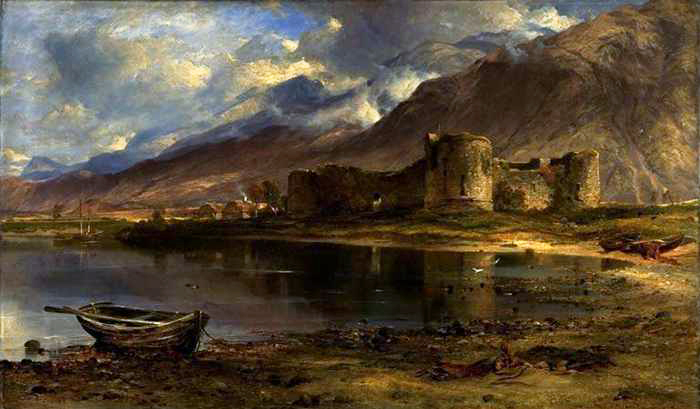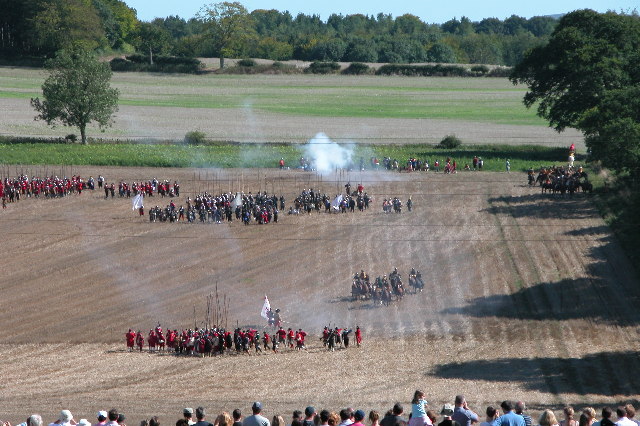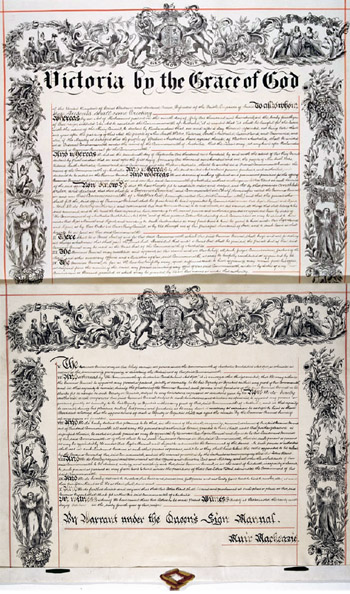|
Lord Bernard Stewart
Lord Bernard Stewart (1623 – 26 September 1645) was a Franco-Scottish nobleman and a third cousin of King Charles I of England, both being descended in the male line from John Stewart, 3rd Earl of Lennox.John Stewart, 3rd Earl of Lennox was the paternal grandfather of Henry Stewart, Lord Darnley, father of King James I of England, father of King Charles I He served as a Royalist commander in the English Civil War, during which he was killed aged 22 and unmarried. Origins He was the youngest of the six sons of Esmé Stewart, 3rd Duke of Lennox (1579–1624) by his wife Katherine Clifton, 2nd Baroness Clifton. His eldest brother was James Stewart, 1st Duke of Richmond, 4th Duke of Lennox.Money 1881, pp. 187–188 Career Lord Bernard was to be created Earl of Lichfield by King Charles I for his actions at the first and second Battles of Newbury and at the Battle of Naseby but he died of injuries received leading a sortie against besieging Parliamentary forces in the Battle of ... [...More Info...] [...Related Items...] OR: [Wikipedia] [Google] [Baidu] |
Lord John Stewart
Lord John Stewart (23 October 1621 – 29 March 1644) was a Scottish aristocrat who served as a Royalist commander in the English Civil War. He was one of six sons of Esmé Stewart, 3rd Duke of Lennox and his wife Katherine Clifton, 2nd Baroness Clifton, and the brother of James Stewart, 1st Duke of Richmond. With his youngest brother, Lord Bernard Stewart, he embarked on a three-year tour of the continent in 1639, before returning to join the King's cause in the Civil War as a General. He was killed on 29 March 1644 at the Battle of Cheriton near New Alresford in Hampshire Hampshire (, ; abbreviated to Hants.) is a Ceremonial counties of England, ceremonial county in South East England. It is bordered by Berkshire to the north, Surrey and West Sussex to the east, the Isle of Wight across the Solent to the south, .... Only one of his brothers, Lodovic, survived the war to see the restoration of the monarchy in 1660. Bibliography * * * {{DEFAULTSORT:Stewart, Lord John ... [...More Info...] [...Related Items...] OR: [Wikipedia] [Google] [Baidu] |
Charles I Of England
Charles I (19 November 1600 – 30 January 1649) was King of Kingdom of England, England, Kingdom of Scotland, Scotland, and Kingdom of Ireland, Ireland from 27 March 1625 until Execution of Charles I, his execution in 1649. Charles was born into the House of Stuart as the second son of King James VI of Scotland, but after his father inherited the English throne in 1603, he moved to England, where he spent much of the rest of his life. He became heir apparent to the kingdoms of England, Scotland, and Ireland in 1612 upon the death of his elder brother, Henry Frederick, Prince of Wales. An unsuccessful and unpopular attempt to marry him to Infanta Maria Anna of Spain culminated in an eight-month visit to Habsburg Spain, Spain in 1623 that demonstrated the futility of the marriage negotiation. Two years later, shortly after his accession, he married Henrietta Maria of France. After his accession in 1625, Charles quarrelled with the English Parliament, which sought to curb his ro ... [...More Info...] [...Related Items...] OR: [Wikipedia] [Google] [Baidu] |
Scottish Military Personnel Killed In Action
Scottish usually refers to something of, from, or related to Scotland, including: *Scottish Gaelic, a Celtic Goidelic language of the Indo-European language family native to Scotland *Scottish English *Scottish national identity, the Scottish identity and common culture *Scottish people, a nation and ethnic group native to Scotland * Scots language, a West Germanic language spoken in lowland Scotland *Symphony No. 3 (Mendelssohn), a symphony by Felix Mendelssohn known as ''the Scottish'' See also *Scotch (other) *Scotland (other) *Scots (other) *Scottian (other) *Schottische The schottische is a partnered country dance that apparently originated in Bohemia. It was popular in Victorian-era ballrooms as a part of the Bohemian folk-dance craze and left its traces in folk music of countries such as Argentina (Spanish ... * {{disambiguation Language and nationality disambiguation pages ca:Escocès ... [...More Info...] [...Related Items...] OR: [Wikipedia] [Google] [Baidu] |
Younger Sons Of Barons
Younger or Youngers may refer to: People * Younger (surname) * List of people known as the Elder or the Younger Arts and entertainment * ''Younger'', an American novel by Pamela Redmond Satran ** ''Younger'' (TV series), an American sitcom based on the novel * "Younger" (Seinabo Sey song), 2013 * "Younger" (Ruel song), 2018 * "Younger" (Jonas Blue and Hrvy song), 2019 * ''Youngers'', a British teen drama * "Younger", a song by Dala from ''Everyone Is Someone'', 2009 * "Younger", a song by Imagine Dragons from ''Mercury – Acts 1 & 2'', 2022 * "Younger", a song by Olly Murs from '' You Know I Know'', 2018 * the Younger family, fictional characters in the play ''A Raisin in the Sun'' Other uses * '' Younger v. Harris'', a decision of the United States Supreme Court * Younger Hall, the main music venue in St Andrews, Scotland * Viscount Younger of Leckie, title in the Peerage of the United Kingdom * Younger (title) Younger is a Scottish convention, style of address, or de ... [...More Info...] [...Related Items...] OR: [Wikipedia] [Google] [Baidu] |
Cavaliers
The term ''Cavalier'' () was first used by Roundheads as a term of abuse for the wealthier royalist supporters of Charles I of England and his son Charles II of England, Charles II during the English Civil War, the Interregnum (England), Interregnum, and the Restoration (England), Restoration (1642 – ). It was later adopted by the Royalists themselves. Although it referred originally to political and social attitudes and behaviour, of which clothing was a very small part, it has subsequently become strongly identified with the fashionable clothing of the court at the time. Prince Rupert of the Rhine, Prince Rupert, commander of much of Charles I's cavalry, is often considered to be an archetypal Cavalier. Etymology ''Cavalier'' derives from the same Latin root as the Italian word , the French word , and the Spanish word , the Vulgar Latin word ''wikt:caballarius, caballarius'', meaning 'horseman'. Shakespeare used the word ''cavaleros'' to describe an overbearing swashbuckl ... [...More Info...] [...Related Items...] OR: [Wikipedia] [Google] [Baidu] |
1645 Deaths
Events January–March * January 3 – The Long Parliament adopts the ''Directory for Public Worship'' in England, Wales, Ireland and Scotland, replacing the Book of Common Prayer ( 1559). Holy Days (other than Sundays) are not to be observed. * January 10 – Archbishop of Canterbury William Laud is executed for treason on Tower Hill, London. * January 14 – English Civil War: Thomas Fairfax is appointed Commander-in-Chief of the Parliamentarians. * January 29 – English Civil War: Armistice talks open at Uxbridge. * February 2 – Battle of Inverlochy: The Scottish Covenanters are defeated by Montrose. * February 15 – English Civil War: The New Model Army is officially founded. * February 28 – English Civil War: The Uxbridge armistice talks fail. * March 4 – English Civil War: Prince Rupert leaves Oxford for Bristol. * March 5 – Thirty Years' War – Battle of Jankau: The armies of Sweden decisively defeat the ... [...More Info...] [...Related Items...] OR: [Wikipedia] [Google] [Baidu] |
1623 Births
Events January–March * January 21 **Henry Cary, 1st Viscount Falkland, Viscount Falkland, England's Lord Deputy of Ireland, issues a proclamation ordering all Roman Catholic priests to leave Ireland, affecting negotiations over the "Spanish match" (which resume in March). **Voyage of the Pera and Arnhem to Australia in 1623, Voyage of the ''Pera'' and ''Arnhem'' to Australia: Captains Jan Carstenszoon of the ''Arnhem'' and Willem Joosten van Coolsteerdt of the ''Pera'' depart on an expedition for the Dutch East India Company from Ambon, Maluku (Amboyna) to explore the Australian coast. * January – Battle of Mbanda Kasi: Forces from the Kingdom of Kongo defeat the Portuguese Empire, Portuguese. *February 7 – France, Savoy and Venice sign the Treaty of Paris (1623), Treaty of Paris, agreeing to cooperate in removing Spanish forces from the strategic Alpine pass of Valtelline. * February 25 – Thirty Years' War: Duke Maximilian I, Elector of Bavaria, ... [...More Info...] [...Related Items...] OR: [Wikipedia] [Google] [Baidu] |
Battle Of Cheriton
The Battle of Cheriton of 29 March 1644 was an important Parliamentarian victory during the First English Civil War. Sir William Waller's "Army of the Southern Association" defeated a Royalist force jointly commanded by the Earl of Forth and Sir Ralph Hopton. Defeat ended Royalist hopes of retaking South East England and forced them onto the defensive for the rest of 1644. Although less well known than the Battle of Marston Moor, in his " History of the Rebellion" senior Royalist advisor Clarendon considered Cheriton an equally disastrous defeat. Background In summer 1643, a Royalist army led by Lord Hopton invaded Hampshire and Sussex, whose Wealden iron industry was Parliament's main source of armaments. Despite initial success, by early January 1644 a series of defeats led Charles I to order a retreat into Wiltshire. When Hopton argued for remaining in Hampshire, Charles sent him a detachment from the Royalist field army in Oxford led by the Earl of Forth. By th ... [...More Info...] [...Related Items...] OR: [Wikipedia] [Google] [Baidu] |
Battle Of Edgehill
The Battle of Edgehill (or Edge Hill) was a pitched battle of the First English Civil War. It was fought near Edge Hill, Warwickshire, Edge Hill and Kineton in southern Warwickshire on Sunday, 23 October 1642. All attempts at constitutional compromise between Charles I of England, King Charles and Long Parliament, Parliament broke down early in 1642. Both the King and Parliament raised large armies to gain their way by force of arms. In October, at his temporary base near Shrewsbury, the King decided to march to London in order to force a decisive confrontation with Parliament's main army, commanded by the Robert Devereux, 3rd Earl of Essex, Earl of Essex. Late on 22 October, both armies unexpectedly found the enemy to be close by. The next day, the Royalist army descended from Edge Hill to force battle. After the Parliamentarian artillery opened a cannonade, the Royalists attacked. Both armies consisted mostly of inexperienced and sometimes ill-equipped troops. Many men f ... [...More Info...] [...Related Items...] OR: [Wikipedia] [Google] [Baidu] |
Letters Patent
Letters patent (plurale tantum, plural form for singular and plural) are a type of legal instrument in the form of a published written order issued by a monarch, President (government title), president or other head of state, generally granting an office, right, government-granted monopoly, monopoly, title or status to a person or corporation. Letters patent can be used for the creation of corporations, government offices, to grant city status or heraldry, coats of arms. Letters patent are issued for the appointment of representatives of the Crown, such as governors and governor-general, governors-general of Commonwealth realms, as well as appointing a Royal Commission. In the United Kingdom, they are also issued for the creation of peers of the realm. A particular form of letters patent has evolved into the modern intellectual property patent (referred to as a utility patent or design patent in United States patent law) granting exclusive rights in an invention or design. In ... [...More Info...] [...Related Items...] OR: [Wikipedia] [Google] [Baidu] |
Battle Of Rowton Heath
The Battle of Rowton Heath, also known as the Battle of Rowton Moor, occurred on 24 September 1645 during the English Civil War. The Parliamentarians, commanded by Sydnam Poyntz, inflicted a significant defeat on the Royalists under the personal command of King Charles I, inflicting heavy losses and preventing Charles from relieving the siege of Chester. Before the battle, Charles had been attempting to link up with the Marquess of Montrose in Scotland following the Royalist defeat in the Battle of Naseby. Although his attempts were unsuccessful, they were disruptive enough that the Committee of Both Kingdoms ordered Sydnam Poyntz to pursue the King with approximately 3,000 horse. After Charles was informed that Chester, his only remaining port, was under siege, he marched intending to relieve the defenders, ordering 3,000 horse under the command of Marmaduke Langdale to camp outside the city while he and 600 others travelled into Chester itself on 23 September 1645. Th ... [...More Info...] [...Related Items...] OR: [Wikipedia] [Google] [Baidu] |





